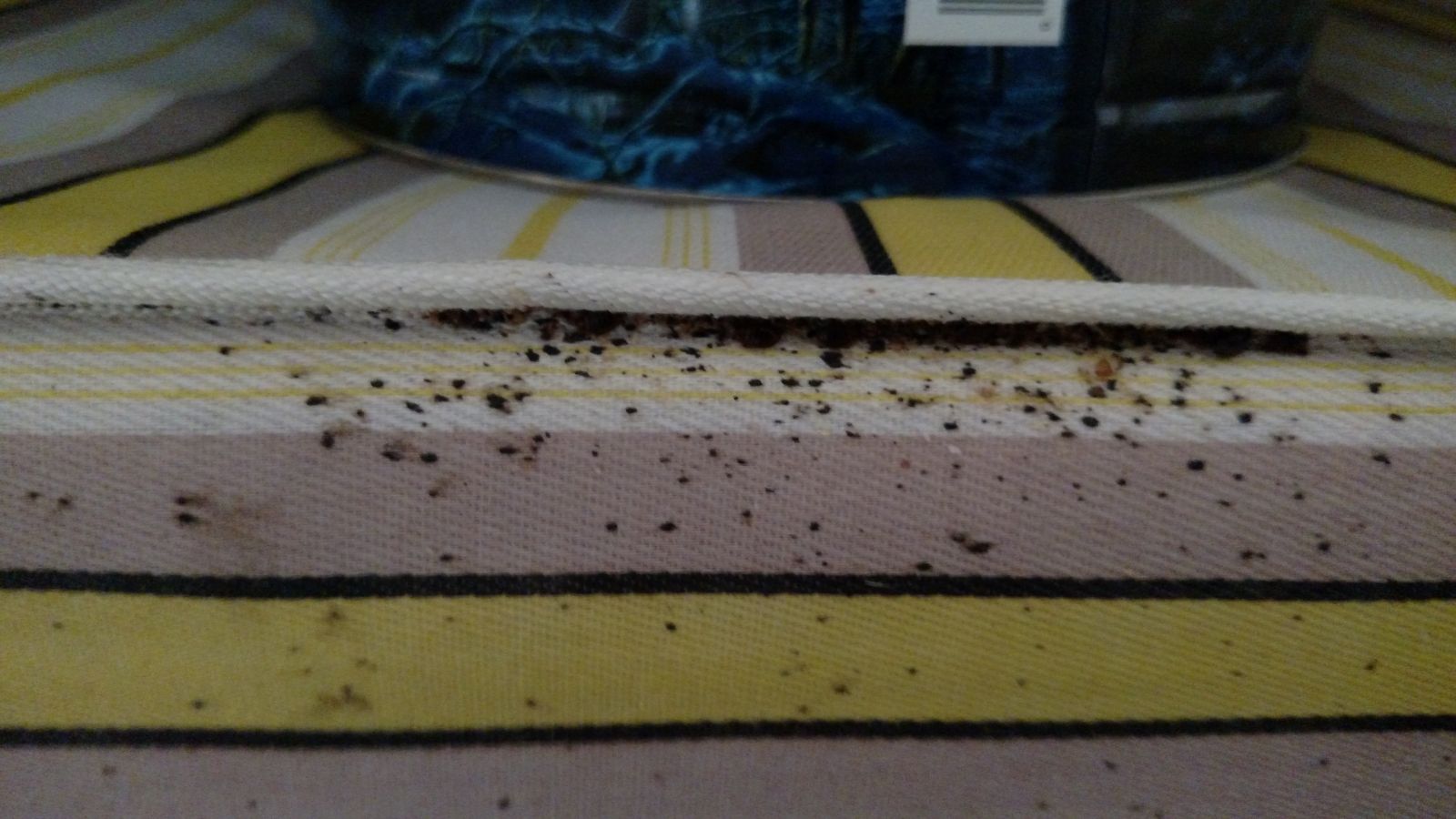|
 Bed bugs feed only on blood, and the adult female bed bug must have a blood meal from a warm blooded animal before she begins to lay her eggs. The species of bed bug that attacks humans is named The Common Bed Bug – Cimex lectularius – and also is known as the wall louse, house bug, mahogany flat, red coat, and crimson rambler. You can see the confusion if only common names are used and why a “scientific” name is assigned for each species of organism in the world. The female bed bug gets her quota of blood by sticking her piercing-sucking mouthparts into a human being and sucking up the desired quantity of blood. This takes about ten minutes. She then begins to lay her eggs. She produces a quick-drying glue-like substance that she will use to stick her eggs to the surface upon which she has chosen to lay them. She will produce only one to six eggs each day and if she is able to replenish her supply of blood food at intervals can be capable of laying up to 200 eggs in her lifetime. Bed bugs feed only on blood, and the adult female bed bug must have a blood meal from a warm blooded animal before she begins to lay her eggs. The species of bed bug that attacks humans is named The Common Bed Bug – Cimex lectularius – and also is known as the wall louse, house bug, mahogany flat, red coat, and crimson rambler. You can see the confusion if only common names are used and why a “scientific” name is assigned for each species of organism in the world. The female bed bug gets her quota of blood by sticking her piercing-sucking mouthparts into a human being and sucking up the desired quantity of blood. This takes about ten minutes. She then begins to lay her eggs. She produces a quick-drying glue-like substance that she will use to stick her eggs to the surface upon which she has chosen to lay them. She will produce only one to six eggs each day and if she is able to replenish her supply of blood food at intervals can be capable of laying up to 200 eggs in her lifetime.
The eggs are white in color, elongated in shape, and about 1 millimeter long, and that is not very big. The eggs take a week or longer to hatch and the colder the temperature the longer it will take, the warmer the temperature the sooner they will hatch. Temperatures up to that of a human body are ideal – around 98 degrees, and if the temperature rises much above that the eggs may not hatch at all. In fact, we can use temperature as a very effective weapon against bed bugs, and at 122 degrees Fahrenheit we can kill all stages of these insects. The nymph that hatches from the egg – the first instar nymph – is almost colorless and is extremely HUNGRY. At this very first point it looks like a bedbug, and it certainly can say with all honesty “I know who my mother is....because I look like her”.
When this first instar nymph takes it first blood meal it takes on the color of blood, turning red or even purplish. After digesting its blood meal it goes through ecdysis, casts its exoskeleton, and becomes a hungry second instar nymph. After feeding and digesting its second blood meal it again molts and reaches the third instar stage. This process continues, with a blood meal at each instar stage, until it reaches the fifth instar level. It then casts its skeleton for the last time to become a full-fledged adult, capable of mating and producing its own progeny. If conditions are not too favorable, such as a cold environment or difficulty in finding a blood donor, the process may take as long as five months to go from egg to adult.
In George Washington’s time bedbugs were just a fact of life. They were so common that our little saying of “sleep tight, don’t let the bedbugs bite” actually had meaning to everyone. The owners of taverns and wayside houses that put up tourists overnight usually stood each leg of the bed in a container of kerosene or oil in order to thwart the bedbugs from getting into bed with poor George or other travelers. At least this is what the classier places offered. As a matter of fact bedbugs were common in hotels, motels, inns, and other resting places for the next 150 years until the advent of DDT, which all but wiped out this awful pest, and once more allowed the traveler the luxury of a good night’s sleep. Back in those days the presence of bed bugs in homes was accepted as just one of the normal events in our lives.
Contact Lady Bug Pest Control Specialists for a Free Home Estimate for Ticks, Fleas, Termites, Eco-Friendly Pest Control, Home Seal Service, Bed Bug Eco-Heat, and Rodent Control.
Bed Bug Life Cycles Mesa, AZ
We perform Complete Home Inspections. Lady Bug also will do a free inspection if you already are under contract with another company and take over your existing termite warranty policy. Please feel free to contact Lady Bug Pest Control Specialists to answer any of your pest control questions or for a FREE Inspection. 480-833-1111.
|



 Bed bugs feed only on blood, and the adult female bed bug must have a blood meal from a warm blooded animal before she begins to lay her eggs. The species of bed bug that attacks humans is named The Common Bed Bug –
Bed bugs feed only on blood, and the adult female bed bug must have a blood meal from a warm blooded animal before she begins to lay her eggs. The species of bed bug that attacks humans is named The Common Bed Bug – 



